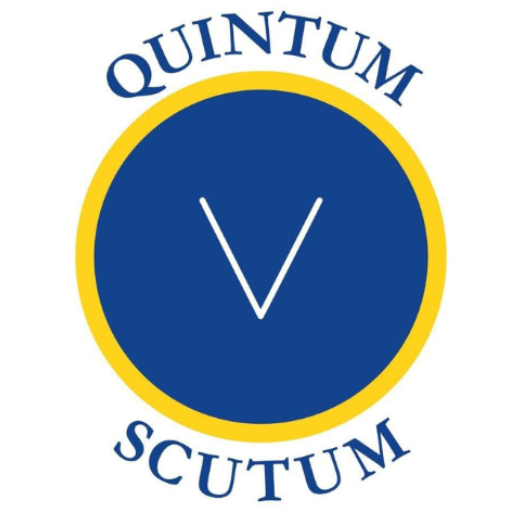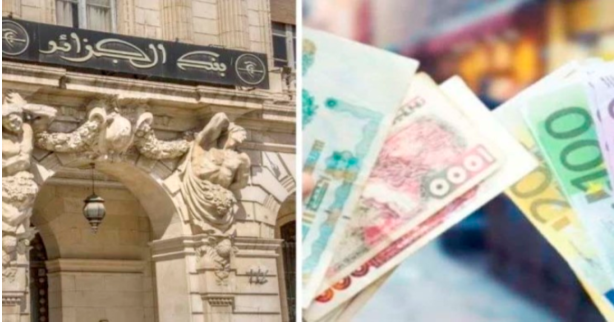Physical Address
Indirizzo: Via Mario Greco 60, Buttigliera Alta, 10090, Torino, Italy
Physical Address
Indirizzo: Via Mario Greco 60, Buttigliera Alta, 10090, Torino, Italy


According to data from the ONS, the Government body responsible for Government statistics, export prices of goods saw a decrease of 7.4% compared to the first half of 2024 and import prices of goods, a decrease of 2.8% during the same period.
However, despite this drop in prices, the volume of imports increased significantly (+28.4%), while that of exports decreased (-1.2%). Thus, in the first half of 2025, imports recorded an increase of 24.8%, reaching 3,767.0 billion dinars, compared to 3,018.3 billion during the first half of 2024, or at the current rate of 130 dinars per dollar, 29 billion dollars giving, according to the same trend, 58 billion dollars at the end of 2025, i.e. a foreign exchange outflow of 64 billion dollars. Exports during this first half of 2025 experienced a drop of 8.5%, standing at 3,055.6 billion dinars compared to 3,338.3 billion in 2023, or 25.67 billion dollars, giving a trend of 51 billion dollars. This decline is mainly explained by the decline recorded in the hydrocarbons category, whose prices fell by 8.2% and volumes also fell by 2.1%. Non-hydrocarbon exports, for their part, recorded an increase in volume of 8.6% and an increase in prices of 3.0%, i.e. an overall increase in value of 11.8% over the period but which the ONS does not highlight thanks to hydrocarbon derivatives. This decrease concerned the following categories: Miscellaneous manufactured articles (-14.6%); Chemicals and related products (-10.7%); Machinery and Transport Equipment (-6.4%); Inedible raw materials, except fuels (-4.5%); Beverages and tobacco (-0.4%) and the increases concern the categories “Mineral fuels, lubricants and related products” (+28.1%) and “Oils, fats and waxes of animal or vegetable origin” (+16.3%).
As a result, we have a trade deficit of 711.5 billion dinars and a decline in the coverage rate to 81.1%, the terms of trade recording a decline, going from 131.4% in the first half of 2024 to 125.3% in the first half of 2025. Which gives a trade deficit of 5.5 billion dollars, an amount to which we must add the types of currencies of the services with paradoxically the Algerian brain drain, estimated in 2024 at around $6 billion or $11.5 billion. This has repercussions on the level of foreign exchange reserves, mainly thanks to Sonatrach. The exports of Sonatrach, the main supplier of foreign currencies, were 60 billion dollars in 2022, 50 in 2023, 45 and if we stick to recent data from the Ministry of Hydrocarbons of 31 billion dollars for the first nine months of 2025 of 31 billion dollars, according to the same rhythm would be at the end of 2025 between 41/42 billion dollars. If the IEA’s forecasts are confirmed around 60 dollars And less for 2026 and 25/30 dollars per megawatt hour of gas (33% of Algerian exports) with strong competition from the USA in Europe after the redent agreements, exports of 250 billion dollars per year, and subject to the maintenance of high domestic consumption, 45/50% of production, of current production in the absence of a policy of targeted subsidies, Sonatrach’s revenues in 2026 would be even lower. As for non-hydrocarbon exports, not to be confused with non-hydrocarbon production in GDP, they increased from 6.9 billion dollars in 2022, 5.01 in 2023, 4.5 billion dollars in 2024 and if we apply an increase of 3% for 2025 the amount would be 4.7 billion dollars, and on each of these amounts more than 65% according to customs statistics are derivatives of hydrocarbons. As for foreign exchange reserves, still due to the deterioration of the trade balance, they would have gone from 70 billion dollars at the end of 2023 to around 67 billion dollars at the end of 2024 (source IMF) and would be lower for 2025, below the 60 billion dollars mark. Because to be able to export, you need companies that are competitive in terms of cost and quality, as the industrial sector in Algeria represents in 2024 less than 6% of GDP. A project to reach its profitability threshold without counting its maturation and bureaucratic hassles (analysis of the project, granting of land, bank loans, negotiations with the foreign partner), after its commissioning in 2025 for SMI-SMEs is a minimum of three years, i.e. 2028, and a large project like the Gara Djebilet iron between 7 to 8 years, i.e. 2032/2033. However, the new bureaucratic procedure based on field surveys, far from speeches disconnected from reality, put in place on July 9, 2025 which consists of the obligation for all companies which import products to present a forecast PPI import program for the second half of 2025 for bank domiciliation and customs clearance of imported goods has led to an increase in prices, shortages and an underutilization of the capacities of a large fraction of the company production apparatus public and private. It is imperative to review this paralyzing procedure.
What prospects? We witnessed between 2021 and the 2026 PLF forecasts a deficit between budget revenues and expenditures and taking a constant rate of 130 dinars one dollar, 21.4 billion dollars in 2021, 32.17 billion dollars in 2022, 45.26 billion dollars in 2023, 47.60 billion dollars in 2024, $63.62 billion in 2025. For the 2026 PLF, revenues should reach 8,009 billion dinars (61.60 billion dollars) 19% of GDP and expenditure 17,636 billion dinars, 42% of GDP (135.66 billion dollars), i.e. a negative difference of 9,627 billion dinars or at the current rate 74.06 billion dollars, with a payroll of 33.6% of the budget of the State and social transfers of 6,000 billion dinars or 46.15 billion dollars or 14.33% of GDP in order to contain the rise in prices. According to the Minister of Finance, the deficit forecast for 2026 would be 5,000 billion dinars, financed by domestic debt, or 38.46 billion dollars, although the PLF 2026 in its framework shows a gap between revenues and expenditures of nearly 74 billion dollars, and this raises the question of why so much spending was planned and the question of the weakness of this absorption capacity. This budget deficit shows a progressive monetization of the deficit with the use of money printing, a source of inflation in the event of rigidity of supply. In a true competitive market economy, the inflation rate would far exceed 10/15% and not the utopian rate announced by PLF 2026 of 2.9%, because administratively compressed by an official exchange rate that does not reflect economic reality. As proof, the gap with the parallel market in November 2025 of around 80%, moving towards 300 dinars per euro favoring speculative actions through generalized and untargeted subsidies and this thanks to the foreign exchange reserves which hold the official quotation of the dinar at more than 70%. In the event of a drop in these reserves, for example between 20/30 billion dollars, Algeria would find itself in the Venezuelan scenario, despite being the world’s largest oil reservoir, with hyperinflation. This is because the Keynesian theory of reviving global demand (consumption and investment) through the budget deficit applying to a productive economy (underutilization of capacities), contrary to what certain experts announce, misleading those in power, does not apply to Algeria suffering from a supply deficit as shown by the importance of the rent from crude and semi-crude hydrocarbons which directly and indirectly irrigates the entire economy and the low level of non-hydrocarbon exports not including hydrocarbon derivatives.
As a consequence of these budgetary tensions and the drop in foreign exchange reserves, we are witnessing another discourse regarding external debt which had been demonized between 2020 and 2024, the argument being that it was out of the question to mortgage the sovereignty of the country, and that Algeria would count on its own capacities to deal with economic imbalances. However, the finance law for 2025 already authorizes the use of external debt, but in a very targeted manner, to finance major investment projects, the objective being to diversify the sources of financing and to maintain a sustainable debt which will be exclusively intended for investment, the terms of application of this debt being set by the Council of Ministers. But what does Algeria provide as a guarantee to benefit from this capital or for any investor who is above all concerned with the visibility of socio-economic policy, political, social, monetary and legal stability, a legal text not being sufficient such as the redent rule of the mining law of 20/80% and to avoid any misinterpretations, the rule of 49/51% applying for hydrocarbons and strategic segments. Furthermore, with debt charges which increased by 102.5% with domestic debt estimated at nearly 18,000 billion dinars, or 138 billion dollars, including the financing of the budget deficit, unconventional debt and credits for public companies like Sonelgaz, the Minister of Finance implicitly recognized in November 2025 before the deputies, the use of unconventional financing which consists of allowing the State to be able to use the Bank’s resources. of Algeria to cover treasury obligations, that is to say the use of printing money. Measure intended for a transition period making it possible to fill the deficit while hoping to avoid an inflationary drift. And the big problem facing Algeria is how to integrate the money supply outside banks? According to reports from the Bank of Algeria, the money supply in circulation outside the banking circuit in Algeria reached approximately $66.25 billion in mid-2024. This amount represents a very significant part of the total money supply (M2), estimated at around 34%. This fiduciary circulation outside banks has experienced continuous growth, with a rate of 8.6% at the end of 2023 and 7.25% at the end of June 2024, showing that there remains a long way to bank this money, digitalization being only a means, the solution to restore confidence without which no measure and no reliable development can come to fruition.
In conclusion, faced with a turbulent and unstable world and growing internal social needs, Algeria being strongly connected to the world economy – import/export -, the growth rate via public spending, the employment rate, foreign exchange reserves, the social body being irrigated essentially by the rent of hydrocarbons, a nation not being able to distribute more than what it produces, in order to avoid strong social tensions in the long term, this makes urgent the need to effectively manage public finances to ensure the stability and economic development in the medium and long term However, it is clear that the Algerian economy is highly dependent on the vagaries of the price of hydrocarbons, the volatile prices of which escape internal decision-making. Also, Algeria’s main challenge to establish a diversified economy and attract FDI that creates added value involves profound structural reforms referring to good governance and the valorization of knowledge, referring to the urgency of strategic planning which is sorely lacking.
Abderrahmane Mebtoul
University professor
International expert